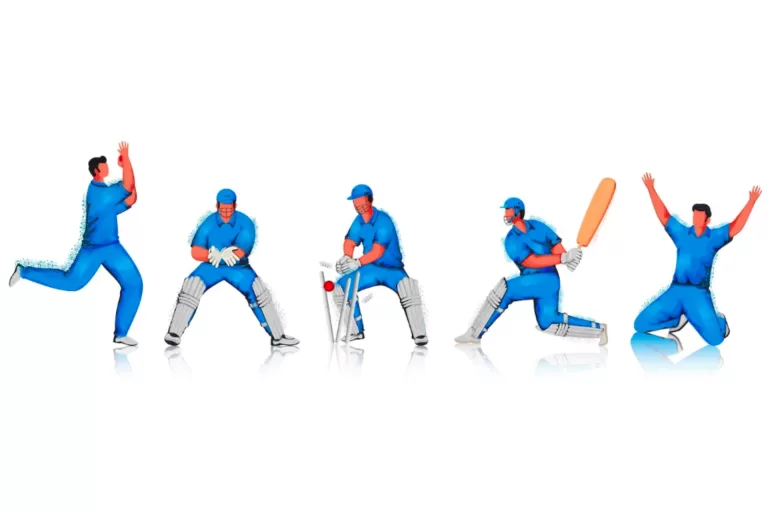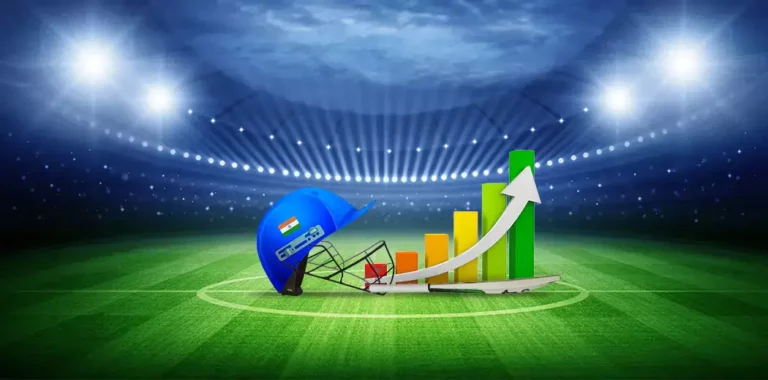Discover The Positions And Roles Of The Cricket Team Players
Cricket is a sport that requires teamwork, strategy, and individual skills to succeed. The Cricket team players have a specific role to play, and the team’s success depends on how well they perform their duties.
Let’s take a closer look at the positions and roles in a cricket team and how they work together to achieve success on the field.
In short, each player in a cricket team has a specific role to play, and the team’s success depends on how well they perform their duties. A well-balanced team with a combination of batters, bowlers, all-rounders, and wicket-keepers is crucial for success in cricket History.
Cricket Team Players: Positions And Roles
A cricket team consists of 11 players who perform different roles on the field. In general, the team can be divided into 4 categories:
- Batsmen,
- Bowlers,
- All-Rounders, And
- Wicket-Keepers.
There is no doubt that each player plays a crucial role in cricket, and their performance can make or break a team.
The following section briefly overviews these different positions and their roles in a cricket team.
Batsmen:

The main job of the batsmen is to score runs and prevent their wickets from falling. There are three to four specialist batsmen in a team, including;
- The Opener,
- Middle-Order Batsman, And
- Tail-Enders.
The team’s batsmen are responsible for putting runs on the board and are the team’s backbone.
Bowlers:

Bowlers have the crucial task of taking wickets and restricting the opposition’s run flow. A cricket team usually has three to four specialist bowlers, including fast, spin, and seam bowlers.
Along with Bowlers are the ones who create opportunities for the team to take wickets and restrict the opposition’s run flow. A cricket team player, who contributes to both the batting and bowling of the team is an all-rounder.
All-Rounders
An all-rounder is a cricket team player who can perform well in batting and bowling. These players are valuable assets for a team as they balance the playing eleven.
Wicket-Keepers

The wicketkeeper’s main role is to stand behind the stumps and catch any deliveries that pass the batsman. They also play an important role in helping the bowlers plan their strategies by giving feedback on the batsman’s technique.
The wicketkeeper assists the bowlers plan their strategies and giving feedback on the batsman’s technique.
Umpire

Umpires are a key part of the game of cricket. Rules are enforced and decisions are made on the field by these officials. There are usually 2 umpires in a cricket match, one standing at each end of the pitch.
Moreover, umpires decide on a variety of aspects of the game, such as declaring a batsman out, awarding runs, and signaling no-balls and wides.
They also can impose penalties on cricket team players who engage in unsportsmanlike behavior. The umpires’ decisions are final and cannot be challenged by players or team officials.
Fielder
Fielders are cricket team players, whose job is to prevent the ball from going for runs and to take catches. Their role is to prevent runs from being scored and to take wickets for the bowlers.
There are various positions on the field for fielders, including;
- Slip Fielders
- Cover Fielders
- Point Fielders
- Mid-Wicket Fielders, And
- Deep Fielders
Each position has a specific role, and the fielders are placed strategically to cover different areas of the field.
Moreover, Fielders need to be agile, quick, and have good catching skills to be effective. They also must work together as a team, anticipating each other’s movements and communicating.
Runner

A runner is a cricket team player who acts as a substitute for an injured batsman in cricket. The runner runs between the wickets on behalf of the batsman, allowing them to keep batting while resting their injury.
A runner is allowed in certain circumstances, such as when a batsman cannot run due to injury. In such cases, the runner must be a player not currently playing in the match.
FAQs
Who is a batsman in cricket?
The batsman’s primary responsibility in cricket is to score runs and prevent their wicket from falling.
Who makes decisions in cricket?
Cricket umpires make important decisions such as declaring a batter out, awarding runs, and signaling no-balls and wides.
What is a runner in cricket?
As a replacement for an injured batsman, a runner runs between the wickets on their behalf during a cricket game.
Conclusion
Overall, each position and role of cricket team players is unique and crucial to the team’s success. Cricket is a sport that requires various skills and roles to be played effectively. Every cricket team player fulfills a unique role and responsibility.
Each role is vital, from the agile and quick fielding unit to the strategic and focused bowlers, the calculated and steady batsmen, the dependable and agile runners, and the sharp and alert wicket-keepers and umpires in making the game exciting and competitive.





4 Comments
Comments are closed.